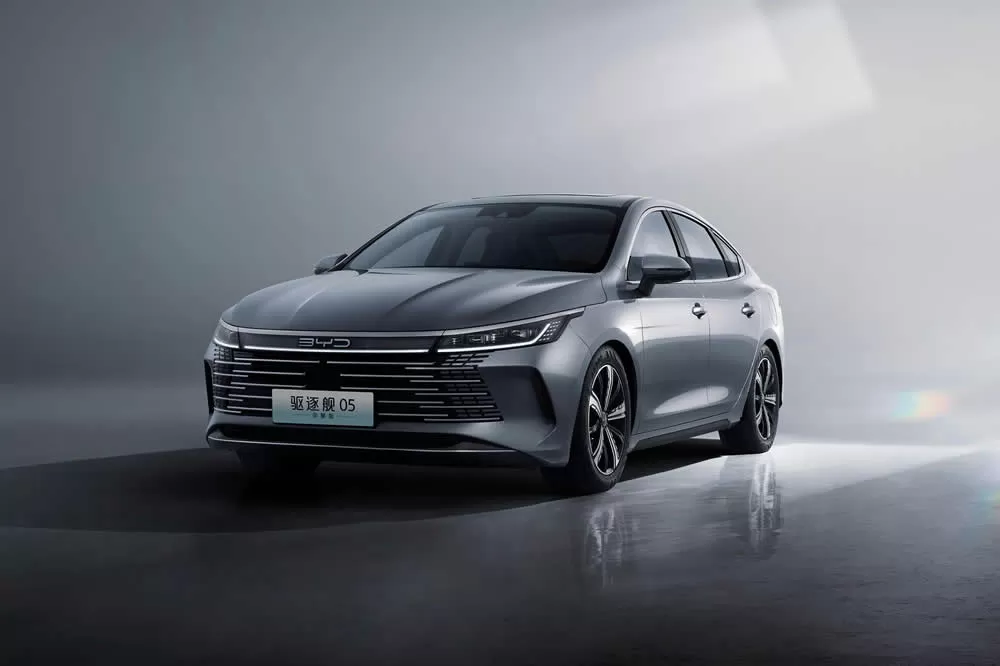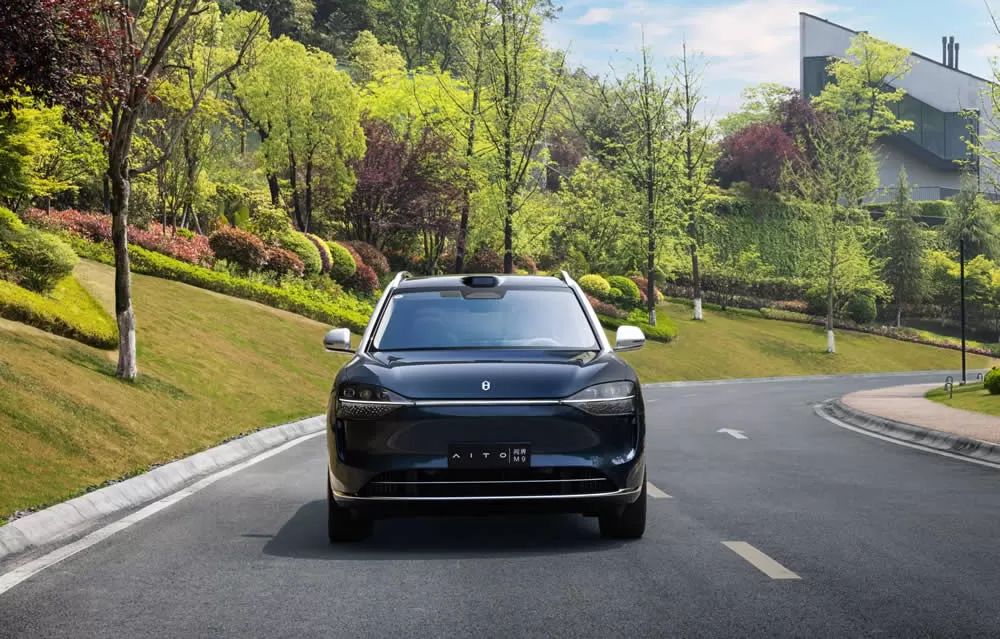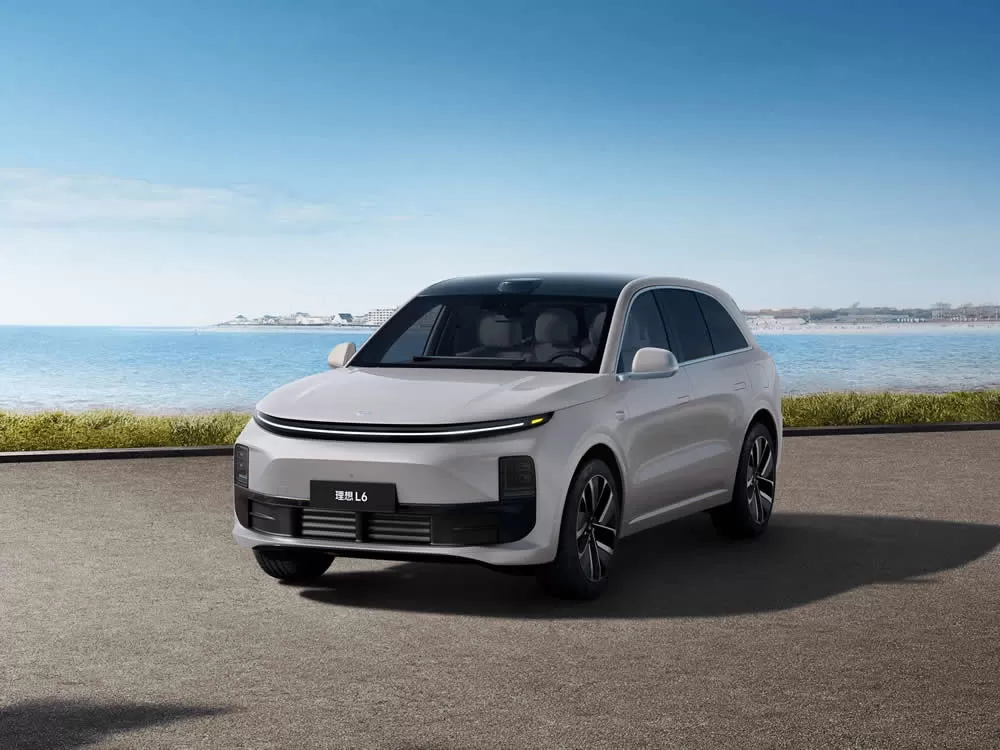
With the rapid development of electric vehicle technology in China, it has already captured a large portion of the global electric vehicle market. The current mainstream hybrid family sedans are the extended-range electric vehicle (REEV) and plug-in hybrid (PHEV). The extended-range electric vehicle (REEV), such as the Lixiang L series, uses a series-connected structure, with the engine acting solely as a generator, while propulsion relies entirely on the electric motor. This "electric vehicle + power bank" model allows for urban electricity costs as low as 0.07 yuan per 100 kilometers. PHEVs, such as the BYD DM-i, utilize a series-parallel architecture, with the engine capable of both generating electricity and directly driving the wheels. While this technology is more complex, they offer significant fuel efficiency advantages at high speeds. For example, the Zeekr 900 triple-motor version can achieve 0-100 km/h in 4.3 seconds while maintaining a fuel consumption of 6.2 L/100 km.
This article provides an in-depth understanding of the two types of vehicles: Range-Extended Electric Vehicle (REEV/EREV) and Plug-In Hybrid Electric Vehicle (PHEV). It helps you analyze the two types of vehicles from the perspective of technical principles and selection guidelines, so as to determine which hybrid vehicle is more suitable for you.

(1). Core power structure
Range-Extended Electric Vehicle (REEV/EREV): Equipped with a pure electric drive system, the battery drives the motor forward, while the internal combustion engine only serves as a generator and does not directly drive the wheels. Its structure is relatively simple and the technical threshold is relatively low.
Plug-in Hybrid Electric Vehicle (PHEV): It has a complex collaborative system that can switch between pure electric (EV), series, parallel and even engine direct drive modes. This makes it more flexible and efficient under different working conditions.
(2). Energy efficiency and endurance performance
High-speed operating efficiency: PHEV has an advantage when cruising at high speeds because the engine can directly drive the wheels, reducing energy conversion losses. In RE-EV, all power paths are first generated and then driven by the motor, which is slightly less efficient.
Pure electric experience and mileage: Some RE-EVs may be equipped with larger battery packs to support longer pure electric driving, making them appear "closer to pure electric vehicles."
(3). Energy conversion efficiency
When cruising at high speeds, the direct drive efficiency of the engine of the plug-in hybrid model reaches 43% thermal efficiency, which saves about 15% energy consumption compared to the dual conversion of "fuel-generation-drive" of the extended-range model. However, in congested urban roads, the extended-range model can always maintain the engine in the optimal speed range through intelligent power generation strategies, which shows its advantages.
(4). Structural complexity and cost
Under the current price war in the Chinese market, some pure electric models are priced the same as hybrid models. However, due to the complexity of the system, the maintenance cost of plug-in hybrids is about 30% higher than that of extended-range models. It is worth noting that the popularization of 800V ultra-fast charging technology has made it possible for pure electric models to recharge 300km in 10 minutes, which has squeezed both types of hybrid models.
PHEV has a complex structure and requires the coordination of the engine, motor and transmission system, as well as complex control strategies. It has a higher technical threshold and greater cost.
RE-EV has a simpler structure, fewer control strategies, is easier to develop, and has relatively low costs and maintenance.
|
tipo |
Ventajas |
|
Vehículos eléctricos de autonomía extendida (REEV/EREV) |
Estructura sencilla y bajo coste. Gran capacidad de batería, fuerte experiencia de conducción eléctrica pura. Sin ansiedad por autonomía, alta eficiencia en desplazamientos urbanos |
|
Vehículo eléctrico híbrido enchufable (PHEV) |
La unidad multimodo se adapta a una gama más amplia de condiciones de trabajo Más eficiente y ahorrador de combustible a altas velocidades Excelente rendimiento integral y efecto de ahorro de energía ecológica. |
In addition, PHEV can achieve a more comprehensive performance balance, such as pure electric driving in urban areas and long-distance economy; REEV is suitable for users who prefer electric driving experience and simple technical paths.

(1). Daily commuting needs
Pure electric priority: If you mainly travel short distances in the city, charging is convenient, and you focus on electric driving experience and energy saving, REEV is more considerate.
Taking into account multiple road conditions: If you often drive on highways or switch between cities and suburbs, PHEV performs more balanced in terms of efficiency and economy.
Daily mileage is less than 80km: give priority to extended-range models (such as Lixiang L7) and use valley electricity for charging at night.
Annual high-speed mileage > 20,000 kilometers: plug-in hybrid models are more economical (such as Zeekr 09 EM-P).
Limited charging conditions: Choose plug-in hybrid (such as BYD Song PLUS DM-i) to reduce charging dependence.
Occasional long-distance driving + emphasis on comfort: Extended-range large-space models (such as AITO M9) are more suitable.
(2). Driving habits and charging facilities
Stable charging conditions: Suitable for REEV, giving full play to the advantages of pure electric.
Unstable charging or frequent long-distance driving: The flexibility of PHEV is more suitable, reducing range anxiety.
(3). Maintenance and long-term costs
Simple structure and preference for low maintenance: Choosing REEV can save maintenance.
Pursuing fuel economy and comprehensive performance: Although PHEV has a complex structure, it has obvious long-term fuel saving advantages.
(4). User Experience Comparison
Driving Quality: Extended-Range Vehicles are fully electric-driven, providing a "pure electric" smoothness. The NVH control of the AITO M9 is comparable to that of luxury brands. The engine intervention of plug-in hybrid vehicles is more subtle when feeding power. The parallel mode of the Zeekr 900 enables seamless power switching.
Energy Recharge Convenience: Extended-Range Vehicles are generally equipped with a large 40-50kWh battery, with a pure electric range of 200km+, suitable for users who only need to charge 1-2 times a week. Plug-in hybrid batteries are smaller (usually 15-30kWh), but support fast refueling.
Performance Preference: Plug-in hybrid vehicles have more sufficient power reserves in mountain/track scenarios due to their engine direct drive capability. For example, the "tank turn" function of BYD Yangwang U8 relies on the coordinated work of its four motors and engine.
(5). Market Trends & Sustainability Considerations
Global automakers are simultaneously deploying PHEVs and REEVs as a bridge solution to the transition to pure electric vehicles. For example, Volkswagen plans to launch an EREV pickup truck, while Volvo defines PHEV as an "electric vehicle with a backup engine."
Therefore, the choice of power form can also be considered as a combination of considerations for the future transformation rhythm.
(1). Context introduction: Starting from the reality of the transition to a new era of pure electric vehicles, the necessity of hybrid technology is introduced.
(2). Technical structure analysis: A brief comparison of the core architectures of REEV and PHEV.
(3). Performance comparison: A brief review of efficiency, endurance, operating conditions, and life cost.
(4). Selection guide: Accurately recommend based on commuting habits, charging convenience, driving environment, budget, etc.
(5). Future trend tips: Prompt global policy and market directions to provide readers with a forward-looking perspective.
Whether you prefer the pure electric feel of an extended-range electric vehicle (EREV) or the all-around fuel efficiency of a plug-in hybrid (PHEV), the key lies in your daily driving scenarios, charging conditions, and the balance between cost and experience.
If your commute is regular and charging is convenient, a REEV may be a better fit. If you frequently travel high-speed or long distances and desire efficiency and economy, a PHEV is a more ideal choice.
Either form provides a rational and pragmatic bridge to the all-electric future.
Taizhou, Zhejiang, CHINA.